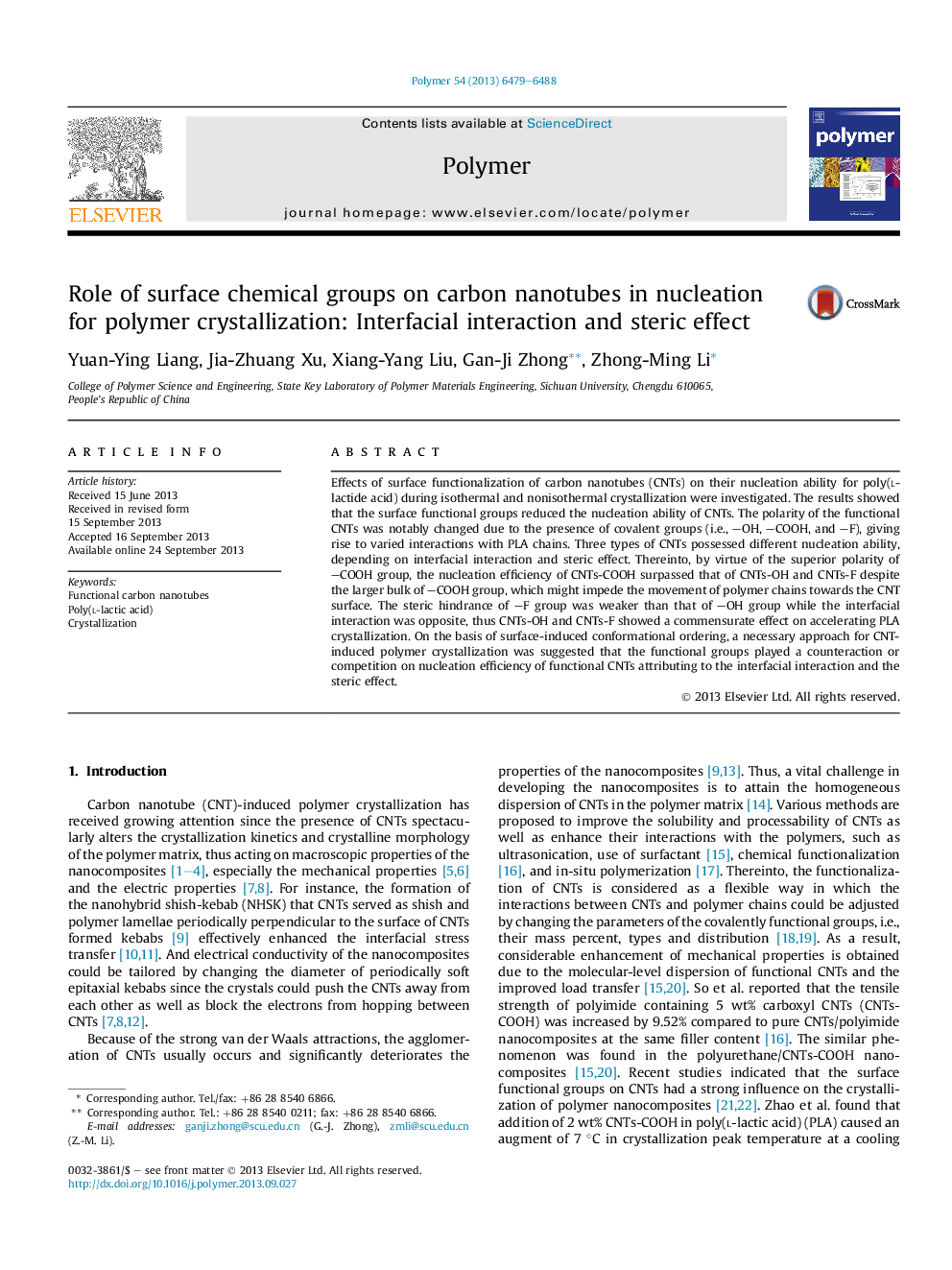| کد مقاله | کد نشریه | سال انتشار | مقاله انگلیسی | نسخه تمام متن |
|---|---|---|---|---|
| 5181404 | 1380961 | 2013 | 10 صفحه PDF | دانلود رایگان |

Effects of surface functionalization of carbon nanotubes (CNTs) on their nucleation ability for poly(l-lactide acid) during isothermal and nonisothermal crystallization were investigated. The results showed that the surface functional groups reduced the nucleation ability of CNTs. The polarity of the functional CNTs was notably changed due to the presence of covalent groups (i.e., -OH, -COOH, and -F), giving rise to varied interactions with PLA chains. Three types of CNTs possessed different nucleation ability, depending on interfacial interaction and steric effect. Thereinto, by virtue of the superior polarity of -COOH group, the nucleation efficiency of CNTs-COOH surpassed that of CNTs-OH and CNTs-F despite the larger bulk of -COOH group, which might impede the movement of polymer chains towards the CNT surface. The steric hindrance of -F group was weaker than that of -OH group while the interfacial interaction was opposite, thus CNTs-OH and CNTs-F showed a commensurate effect on accelerating PLA crystallization. On the basis of surface-induced conformational ordering, a necessary approach for CNT-induced polymer crystallization was suggested that the functional groups played a counteraction or competition on nucleation efficiency of functional CNTs attributing to the interfacial interaction and the steric effect.
Journal: Polymer - Volume 54, Issue 23, 1 November 2013, Pages 6479-6488